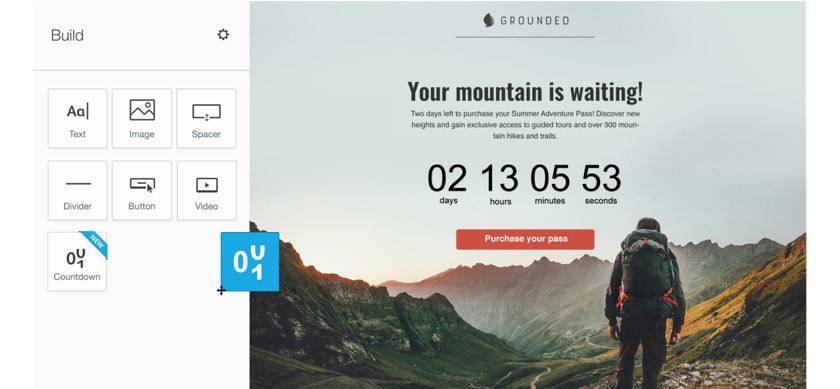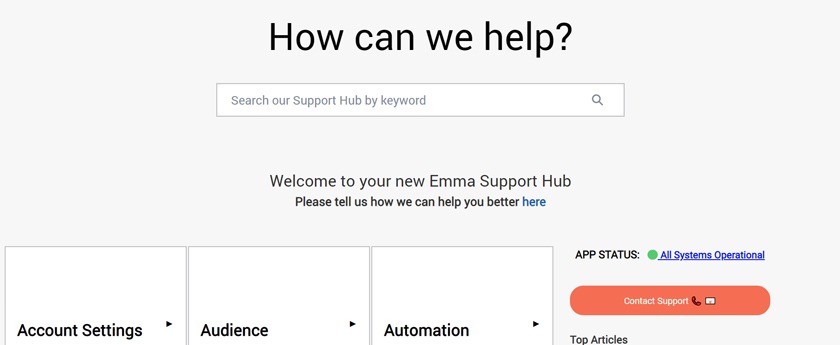Are you getting the results you wanted out of your email marketing campaigns? 42% of marketers say their email marketing strategy is very successful. With the number of email users forecasted to increase over the next year, supporting your overall business strategy with email marketing is a no-brainer when selecting digital marketing activities to invest in.
The truth is that any meticulously crafted digital marketing strategy needs the appropriate tools to successfully deploy it. You’ll need software suited to creating, publishing, and distributing your content, whether it’s a social media scheduling app or a full CMS. The same is true for email marketing—much of the activities that make it so effective are wholly dependent on the email marketing platforms you choose.
Hence why it’s essential for you to seek out and compare different platforms. Pricing models vary among software companies and you always want to get your money’s worth. This allows you to identify whichever suits your needs and budget more closely—and there are quite a few to choose from!
Here are 5 major qualities to consider when choosing an email marketing platform for your business.
1. Email Campaign Creation Features

These are most likely what you’ll be searching for immediately when browsing a potential email platform’s website. The capabilities of your chosen provider determine whether you can fully realize your strategy. Select a provider according to features most likely to accomplish your email strategy’s goals.
You can come across platforms that contain several features, but not all of them—these are still worth paying for if they’re what you’ll be using the most. Identify which key features take priority.
Four key feature sets to examine are:
- Templates: Email marketing is nothing without the actual email content, as well as how each is structured. A good email service provider enables you to turn the emails you envision into reality. This means it should have a roster of selectable templates with a variety of flexible, visually attractive, mobile-friendly designs. The email creation tool should be responsive, as well—minimal lag time and the opportunity for further customization from templates is a huge plus.
- Automation: Effective automation workflows are key to successful email campaigns through personalization and timed activation. Engagement metrics double when emails are triggered by behavior or at relevant times, and in comparison to batch-and-blast emails, triggered emails drive 24x more revenue spend.
Personalization tags are included here as well. Being able to craft personalized emails lets you send tailor-made, relevant content to subscribers, resulting in higher open rates and click rates.
- Tracking: The ability to accurately measure the success of your email campaigns should be one of your top priorities when selecting a provider. A consolidated dashboard is ideal. Metrics measured should include open rates, click-through rates, bounce rates, and unsubscribe rates. Spam rates and social sharing are nice to have as well.
- Mobility: Your emails need to be readable on a mobile device. Where mobile-responsiveness used to be an afterthought, adjusted after a desktop-first experience was perfected, it has now flourished.
Many of your subscribers may not even access the internet on a desktop at all anymore. In the first quarter of 2019, 47.96% of global internet traffic came through mobile devices. Don’t miss out on potential conversions and choose an email provider that allows you to adjust templates to fit a range of devices.
2. Delivery Rates
Can you easily find information on an email marketing platform’s website regarding their average delivery rates? If not, contact their customer support and ask—delivery rates should definitely not come as an afterthought.
You want your emails to reach subscribers’ inboxes right when you choose to schedule them, so the measurement of an email platform’s success in this area can impact how well your campaigns perform. Good deliverability also means an email platform can get your messages into subscribers’ inboxes, and not into the spam folder. Look for a minimum of a 98% delivery rate.
3. Customer Support

Any good SaaS company needs to have stellar customer service. Because of the nature of software, and the nature of services hosted online, it’s inevitable that a platform runs into issues that impact your job.
Treat your email marketing platform as a partner, or extension of your team, by collaborating with their customer service professionals whenever you run into trouble. Not sure how to fully utilize the tools available? They should be able to walk you through the features you need to use. Think you might have accidentally broken your workflows? Ask for help—a member of the support team should be able to help solve any issues.
Cheaper or free providers may have good tools, but resourceful 24/7 customer support is worth the money every time.
4. Available Resources
One problem you may encounter with most email marketing platforms is that they may deactivate accounts that consistently garner low delivery rates. It’s a protective measure against those acting in bad faith or using their services for unwanted spam. However, if you’re just struggling with creating effective campaigns, it can be an unnecessary headache.
Select an email marketing platform that provides the resources you need to improve your email marketing campaigns from strategy phase up until execution and evaluation. This can come in the form of an extensive help center, structured guides for clients, customer support, or a simple blog page full of tips and tricks.
5. Pricing Packages

Last but not least, consider your budget. Many tools are available for free, but more advanced automation and analytics can cost an arm and a leg to upgrade. The question is, do you need them? There are very large, enterprise-level email marketing platforms out there that offer an insane number of features for an equally shocking amount of money. No matter how attractive that looks, however, that complexity may not be worth it if you’re only using a select few features in each campaign.
Determine your budget beforehand and check all pricing tiers for each tool you come across. Each usually has a free, low, mid, and high-tier package for customers. Note which features are available at each price point and weigh each one against the other. Cross-reference it with any others you may be interested in—one could be offering a key feature at a lower price than another.
Final Thoughts
You don’t have to commit to an email marketing platform immediately. Like most types of software on sale, free trials and demos are available, so take advantage of them when you can. Narrow your list down after evaluating their qualities. Then, make use of free trials to test each one out for however long you can. Sometimes what looks good on paper can be difficult in practice.
Look at user reviews and the size of a platform’s community as well. There may be alternatives to some of the most popular email marketing platforms that operate just as well but aren’t as well-known.


